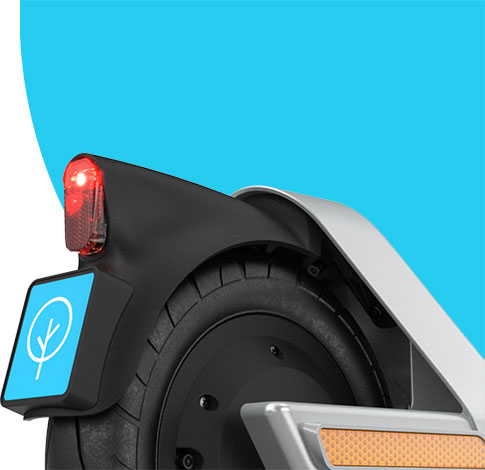2020 was a watershed year for micromobility.
The global pandemic and its subsequent confinement efforts increased our reliance on sustainable, socially-distant urban transportation almost overnight. In response, everyone from city officials to e-scooter operators like Bird pitched in to help.
From increased sanitization practices and community-focused app features to advanced vehicle tech and major infrastructure improvements, the past 12 months have fast-tracked the development of the shared e-scooter industry—a trend that’s all but certain to continue into next year.
With that in mind, here are the top micromobility technologies that are most likely to shape urban mobility in 2021.
1.) Enhanced ID Verification
An important part of ensuring both rider and community safety is preventing fraudulent behavior and underage riding on the front end. This is where enhanced ID verification will play a key role in the upcoming year.
Look for operators to invest in advanced real-time ID scanning and authentication in 2021. This technology uses zero bias, ultra-fast processing to ensure every ID is unique and valid. It also reduces the wait time on verification completion to just seconds, increasing efficiency and preventing the “grace period” that can lead to underage riding. Since most micro-EV operators provide services in multiple countries, the ability to accurately scan valid international IDs in different languages will be of critical importance.
2.) Expanded MaaS Integrations
Hundreds of millions of e-scooter rides globally have demonstrated something most operators suspected from the outset: mass transit and micromobility networks complement one another, providing convenient, multimodal transportation options for city residents.
In 2021, count on Mobility as a Service (MaaS) integrations to flourish around the world. These partnerships often allow riders to research, reserve and pay for metro tickets and micromobility vehicles all from the same app, similar to Bird’s revolutionary integration with Skipr in Belgium earlier this year. MaaS collaborations will also give mass transit operators the opportunity to expand their service footprint in cities, offering a new source of revenue to offset COVID losses similar to Bird’s industry-first public-private partnership with Globalvia in Spain.
3.) Improved Geofencing
Since Bird first introduced geofencing for shared e-scooters in 2017, city needs around parking and riding have evolved considerably. More riders in more cities has meant an increased dependence on virtual solutions to ensure compliance with local rules.
Expect to see geofencing technology make significant developments in 2021, including more precise GPS accuracy and reduced vehicle response times. Such advancements will allow for increasingly granular “reduced speed” and “no riding” geozones that can be applied on a block-by-block basis. They will also play a pivotal role in detecting and eliminating issues with sidewalk riding and poor parking.
Learn More
To learn more about recent developments and upcoming trends in micromobility, see the articles below or subscribe to the Bird Cities Blog.

